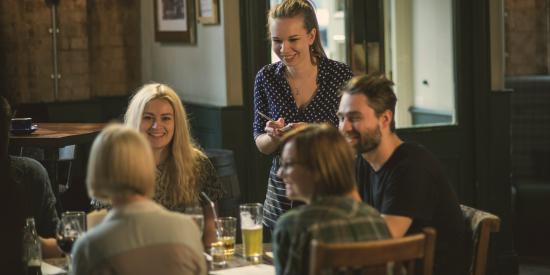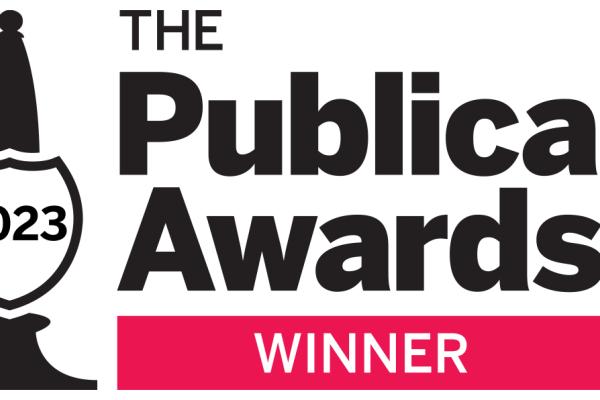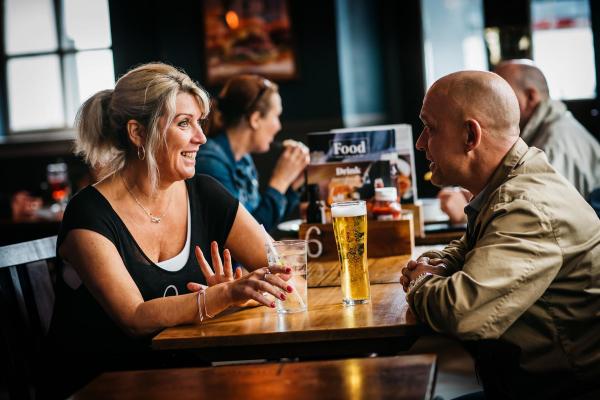How to open a restaurant in a pub
Most chefs dream of having their own restaurant. A place where they can focus their talents, develop the type of menus they want to cook and have the satisfaction of being their own boss. Putting these dreams into practice can be harder than it looks – which is why many chefs turn to pubs as an option.
Take Tom Kerridge for example, who opened his first restaurant at the Hand & Flowers in Marlow. Within a year he had gained his first Michelin star – and has never looked back since. He has even expanded, setting up different types of restaurants in other pubs (the most recent has a traditional butcher’s shop on site) as well as becoming a TV celebrity chef.
Pub Tenancies Are An Affordable Way Of Opening A Restaurant
A pub tenancy or lease offers a more affordable option than raising finance to get a lease on premises. Costs are much lower, especially when compared to the costs of buying into and maintaining a high street site. A careful hunt through the available pubs on offer will often highlight pubs that already have restaurant facilities, which can reduce initial costs still further. You can launch your business with a much smaller budget than if you were investing in premises without these facilities.
Support With Refurbishment
Depending on the pub you choose, you may be able to access a Capex scheme that will help with refurbishment costs. Often pubs are marked for investment and improvement by the pub company so if you work with them and take advantage of those plans by tailoring the investment to suit your requirements. A Capex scheme could extend the restaurant space, provide outdoor catering facilities, or upgrade the catering kitchen.
Infrastructure and Support in Place
Start up costs for any new business can be high. A new restaurant on the high street not only has to deal with the cost of premises, but also any refitting, equipment, uniforms, staff recruitment, furniture, as well as the initial outlay on food and drinks. Then there is the need for working capital and marketing costs plus legal fees and business rates. Taking on an existing pub means that many of those costs can be reduced or avoided, as the site may already come with staff, facilities, infrastructure and a customer base.
There is also the question of licensing and permits. For example you may need to apply for planning permission to change a retail space into a restaurant. This can be avoided when you take on a pub as most of these things will already be in place. You’ll need to get your personal licence and complete the BII Pre-Entry Awareness Training (PEAT), as well as getting Food Hygiene Certification and Food Premises Approval, but these are relatively straightforward compared to applying for a ‘change of use’.
Ready Made Customers!
Taking on a pub means you have a ready made pool of potential customers! Every person who comes into the pub for a drink is potentially a customer who may buy food as well. The key is making sure that your food offer matches the type of customer the pub attracts. It is much harder to attract large numbers of new customers than to encourage existing customers to spend more in your pub.
That means taking into account the demographic when you’re looking for a pub to let. Opening a restaurant in a pub is a logical move as long as you tailor your concept to match the customer base – it’s really important to keep your existing customers while encouraging new ones to visit.
Preparation Is Key
Simply opening a restaurant and expecting customers to rush in will not create a successful business. Preparation is key. Having made the decision to open your own restaurant in a pub, you need a robust business plan.
Before they consider handing over the keys, a business plan will be required by the pub company, your financial advisors and any investors! But it’s also a very useful document for you, helping you to shape your ideas and keep focused on your objectives. If you haven’t prepared a business plan before, it can feel somewhat daunting which is why Greene King have areally helpful Business Plan template that you can use – download it here.
Filling in this template will help you test out your ideas, identify opportunities and plan how you will grow your business. You’ll need to provide information about your restaurant concept and your USP’s (unique selling points). Details of your target customers, why the pub would be the perfect location, your management team, marketing, financial details, break even analysis, budgets and anticipated profit/loss statements for the first three to five years of trading. Creating a business plan enables you to clarify your business model, planning aspects such as cashflow, costs and sales. Once complete, it will help with the day-to-day management of the restaurant and pub, as you will be able to refer back and assess whether you are meeting targets, remaining competitive and driving the business forward.
Business Development Managers
Taking on a pub tenancy offers another big advantage – you get a tremendous amount of help and support whenever you need it. Your Business Development Manager (BDM) is an invaluable source of assistance, being there to provide help and advice especially through those first weeks running your own business. It’s like having your own business mentor, but one that has extensive experience in the hospitality and pub industry working with people just like you.
Like the sound of opening your restaurant in a pub? If you would like to find out more about taking on a pub tenancy or lease, sign up for our email series that will take you through the research and planning stages of exploring this business model.
Any questions? Get in touch with us directly and speak to one of our team.




